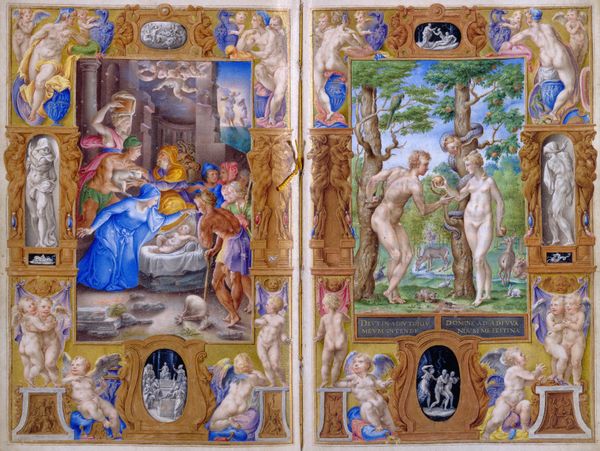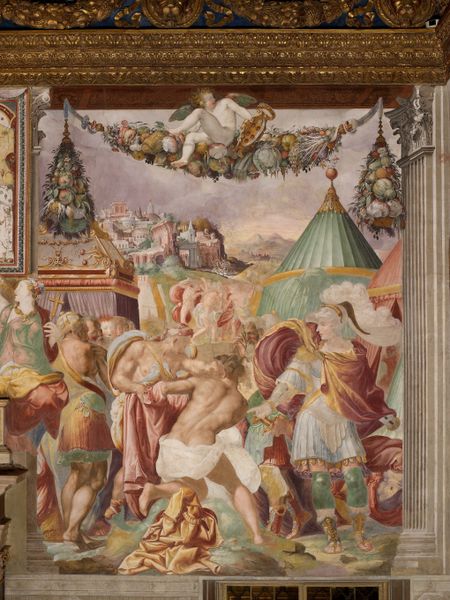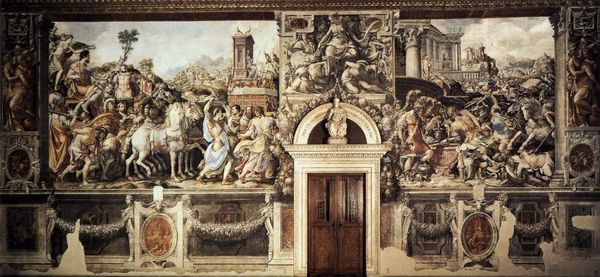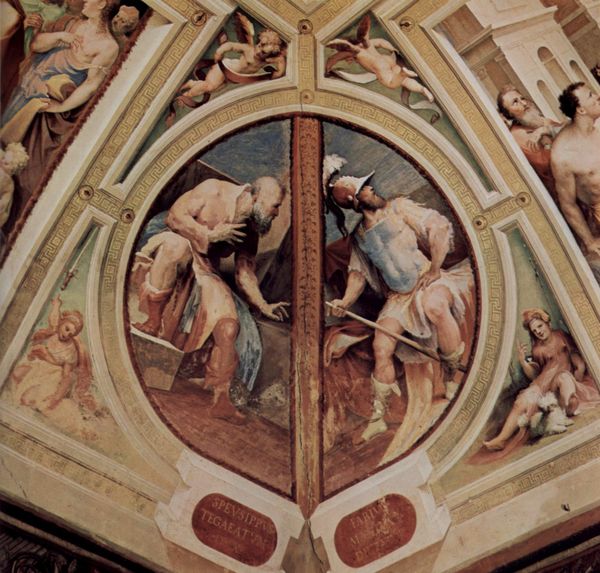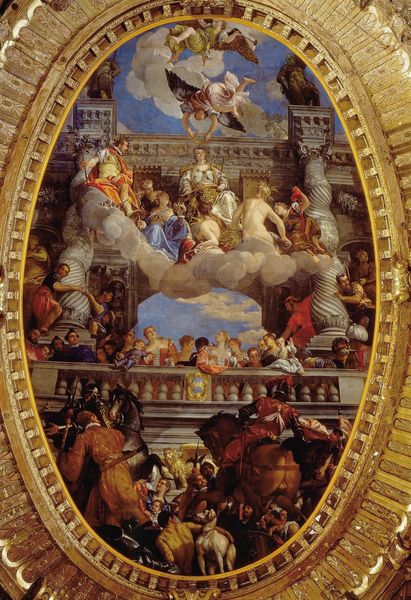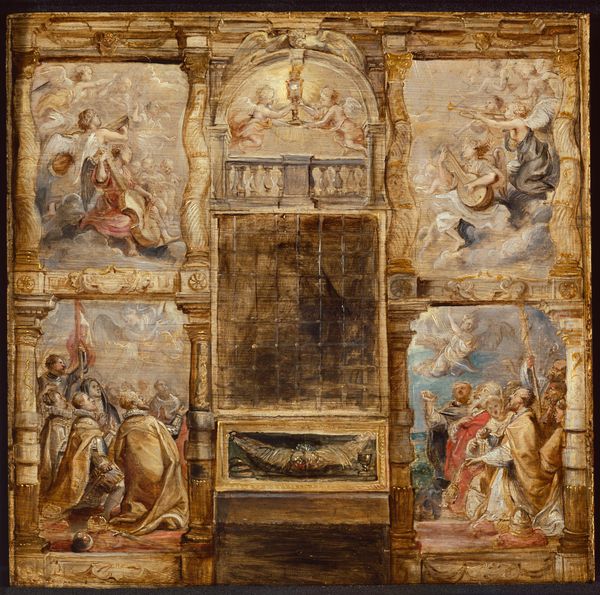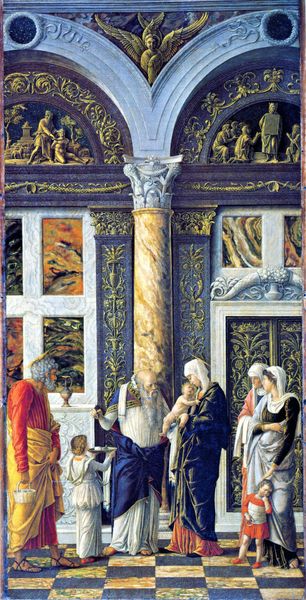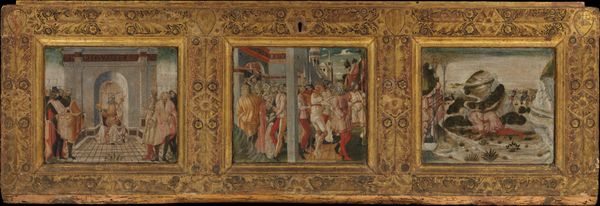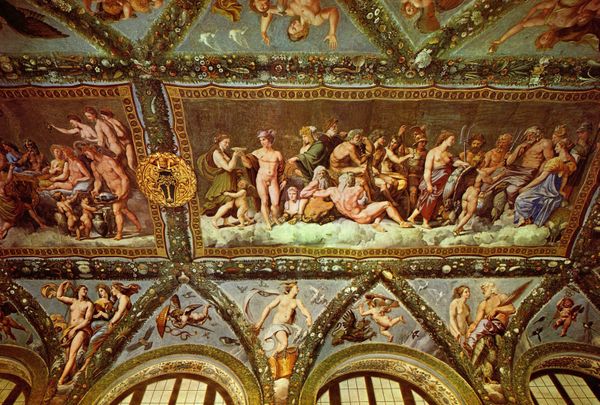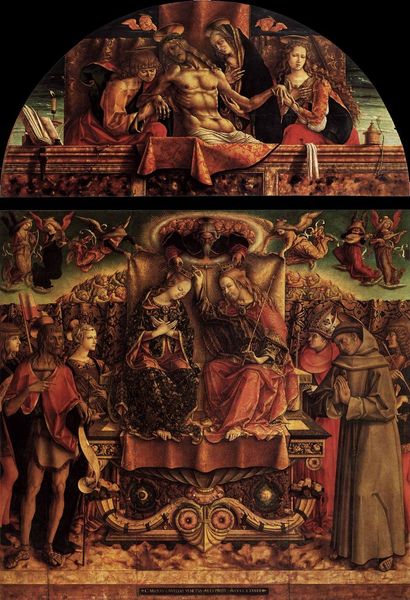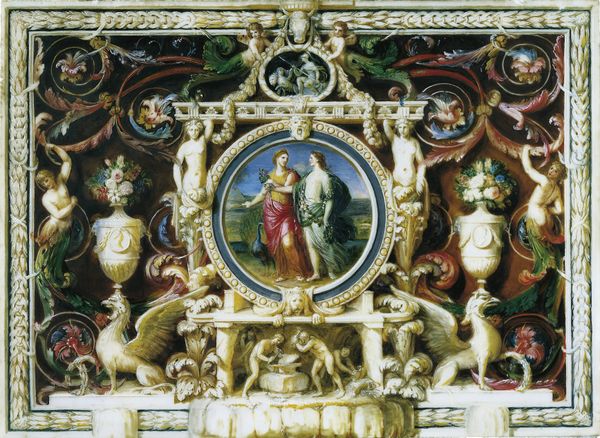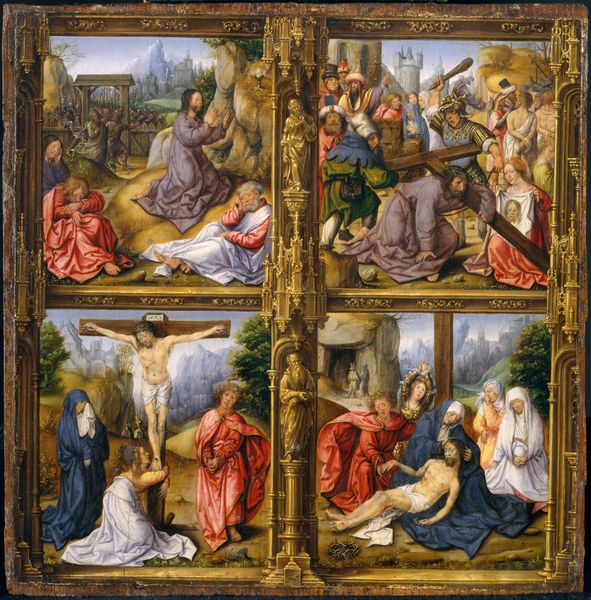
Adoration of the Magi and Solomon Adored by the Queen of Sheba 1546
0:00
0:00
tempera, painting, textile
#
allegory
#
tempera
#
painting
#
textile
#
holy-places
#
mannerism
#
figuration
#
text
#
handmade artwork painting
#
group-portraits
#
history-painting
#
italian-renaissance
#
mixed media
#
miniature
Copyright: Public domain
Editor: This is Giulio Clovio’s "Adoration of the Magi and Solomon Adored by the Queen of Sheba," a tempera painting from 1546. The book format gives the artwork a striking presentation. What historical insights can you glean from the combination of these two biblical scenes? Curator: The pairing is fascinating. Clovio sets up a typological comparison popular in the Renaissance: the Old Testament prefiguring the New. Solomon receiving the Queen of Sheba was often interpreted as a precursor to the Magi's adoration of Christ. This comparison elevates Christ, establishing his universal kingship. Do you notice how the architectural and figure styles differ between the two scenes, hinting at their distinct origins and cultural contexts, yet are presented side by side? Editor: Yes, the contrast is really striking now that you point it out. The classical grandeur on the right compared to what appears like more earthly landscape on the left. Curator: Precisely! Consider too the audience for such a work. A private patron, likely wealthy and educated, commissioning a book of hours. Its intricate details and learned iconography speak to an exclusive viewership familiar with biblical narratives and their complex interpretations. What does this reveal to you about the function of art in that historical moment? Editor: It suggests art was both a display of personal wealth and a tool for reinforcing religious and social hierarchies, maybe used during personal devotions. Curator: Exactly. The politics of imagery – who commissions it, who consumes it, and what messages it conveys – are crucial for understanding the historical role and function of art. Editor: I hadn’t thought about the socio-political implications so directly before. Seeing this artwork through a historical lens has really enriched my understanding. Curator: And I have valued the opportunity to share how to view artworks by examining their function, audience, and purpose in society.
Comments
No comments
Be the first to comment and join the conversation on the ultimate creative platform.
